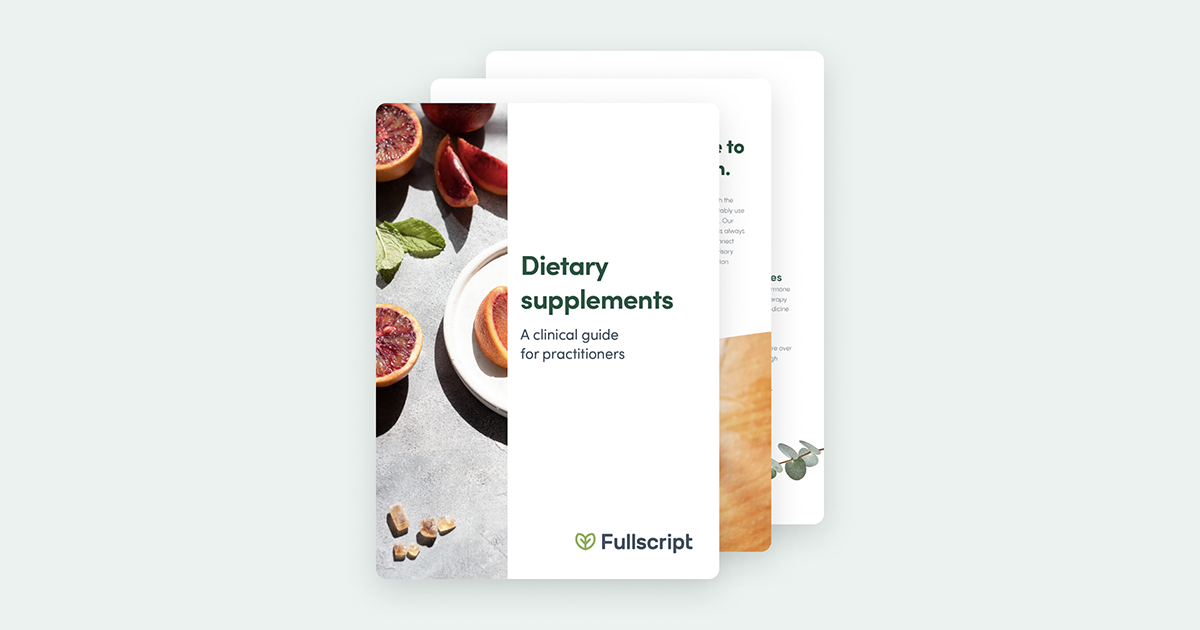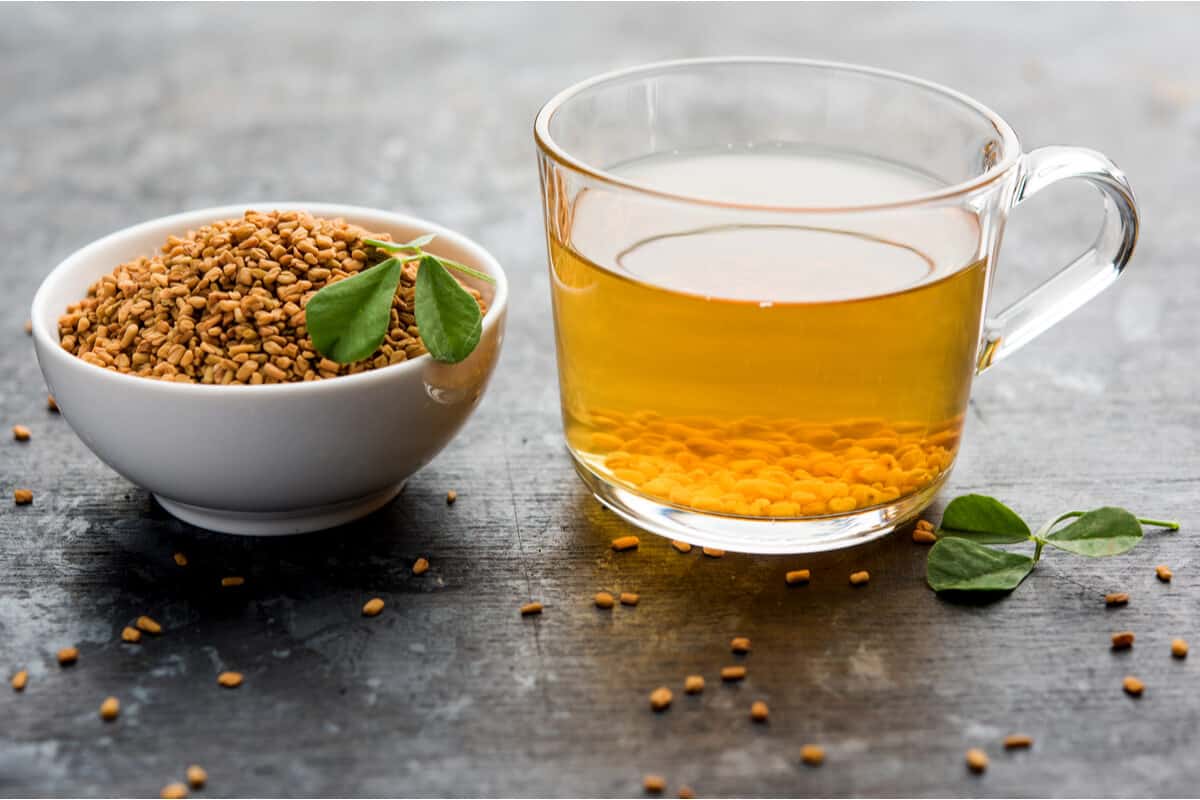Do you suffer from post-meal bloating, esophageal reflux, or nausea? These symptoms, as well as pain located in the right side of your abdomen, can be an indicator of an issue with your gallbladder. Continue reading to learn about gallbladder function and natural remedies for gallbladder pain and gallstones.

Common symptoms of gallstones include nausea, vomiting, and abdominal pain.
What does the gallbladder do?
The gallbladder, an indispensable and fragile organ of the digestive system located near the liver, is responsible for storing bile from the liver, then releasing it into the small intestine to promote proper digestion. The shape of the gallbladder is similar to a pear. Its measurements range from 3 to 4 cm in diameter and 8 to 10 cm in length. (15)

Start using supplements in clinical practice
What are gallstones?
Bile is formed from water, cholesterol, fats, bile salts, and bilirubin. When bile contains too much cholesterol, bile salts, or bilirubin, hard crystalline masses known as gallstones or choleliths can develop. Gallstones can cause a disturbance of the digestive system and, for some individuals, may be painful and require medical intervention. Gallstones can vary from person to person and are inconsistent in size and quantity. (11) There are two main types of gallstones, which include: Cholesterol stones: caused by hardened cholesterol Pigment stones: caused by too much bilirubin (11) Certain populations are more likely to suffer from gallstones, including:
- Overweight or obese individuals
- Seniors
- Women (11)
Gallstone symptoms
Gallstones may or may not present with any symptoms. Common symptoms associated with gallstones include:
- Back pain, especially near the shoulder blades
- Esophageal reflux
- Nausea and vomiting that may be accompanied by sweating
- Persistent abdominal pain
- Post-meal bloating (12)(19)(20)
Addressing gallbladder pain and gallstones
A number of natural ingredients may help alleviate gallbladder pain; in some cases, gallbladder removal may be recommended. To help reduce the pain associated with gallstones your practitioner may recommend certain dietary supplements. Outlined below are some of the evidence-based supplement ingredients that may help relieve pain associated with gallstones.
Fenugreek (Trigonella foenum graecum)
Fenugreek (Trigonella foenum graecum), one of the oldest medicinal plants, is a Mediterranean leguminous plant (relating to plants of the pea family). It is a very nutrient-rich spice containing phosphorus, iron, sulphur, nicotinic acid, alkaloids, flavonoids, carbohydrates, magnesium, calcium, lecithin, proteins, steroidal saponins, and vitamins A, B1, and C. (1) Fenugreek is known for its anti-ulcer and appetite-stimulating effects. Several studies have been conducted to investigate the impact of fenugreek on gastric ulcers, (9)(23) particularly in relation to drugs such as omeprazole, an over-the-counter drug used to reduce acid in the stomach. (16) Research has demonstrated that fenugreek seeds exert a potent cytoprotective (cell protective) effect, namely as a result of the following attributes:
- Mucilages and galactomannans: help soothe gastrointestinal inflammation by forming a protective coating on the walls and exert protective effects on the mucous membranes lining the stomach and intestine, gastric function, and the small intestine and colon
- Anti-secretory action: inhibit the secretion of hydrochloric acid by the parietal cells of the stomach
- Lipid peroxidation reduction: plays a major role in the inflammation of the gastric mucosa and the formation of lesions and may be more effective than omeprazole in the prevention of the formation of these lesions (2)

Fenugreek supplements may stimulate bile production.
All these observations show that fenugreek seeds have significant anti-ulcer and anti-inflammatory potential. Fenugreek leaves fortify the liver, stimulate the production of bile and its expulsion from the gallbladder, and may help reduce blood levels of triglycerides and low-density lipoprotein (LDL) cholesterol. (21) Studies have shown that fenugreek seeds contain an unconventional amino acid, 4-hydroxyisoleucine, which has insulin-stimulating properties. (22) By acting on pancreatic cells, this molecule, which exists neither in humans nor in animals, stimulates the secretion of insulin. The main interest of 4-hydroxyisoleucine is that its action is very different to that of the sulfonylureas, insulin-stimulating agents currently used for the treatment of diabetes, since it has no hypoglycemic side effects. (10)
Lemon balm (Melissa officinalis)
Lemon balm (Melissa officinalis) has been cultivated since the time of ancient Greece for its soothing properties. It helps regulate nerve impulses and thereby reduces stomach and colon spasms. (17) A number of studies have drawn attention to the active substances of lemon balm, such as:
- Terpene aldehydes: exhibit antiviral, calming, and sedative properties as well as antihypertensive, stomachic, anti-bacterial and anti-inflammatory qualities
- Terpene alcohols: exert a neurotonic, liver-stimulating, and immunomodulating effect and influences the emotional and mental state
- Caryophyllene: has anti-inflammatory, anti-colitic, and antispasmodic properties (7)(13)
This research has enabled several health agencies, such as the European Medicines Agency and the European Scientific Cooperative On Phytotherapy, to validate the effects of lemon balm, especially for the symptomatic treatment of digestive disorders such as pain, gastrointestinal spasms, and bloating. By promoting bile secretion, it contributes to easing digestion and may help prevent or relieve nausea and vomiting. (4)
Dandelion (Taraxacum)
Dandelion is a plant that is rich in potassium, iron, calcium, copper, silica, and manganese. It also contains fatty acids, choline (a liver-supportive nutrient), B vitamins, vitamins C, D, and K, as well as flavonoids and carotenoids. Additionally, its root produces insulin, complex sugars, and substances that promote the proliferation of beneficial intestinal bacteria. (6) Dandelion has therefore always been primarily used to treat liver and gallbladder disorders and for its overall detoxifying effect. It also provides a diuretic action. (6) Some trials have demonstrated that dandelion supplements have an anti-inflammatory effect and may increase the production of bile. (18) Finally, preliminary clinical trials indicate that certain preparations containing dandelion can relieve intestinal cramps, constipation, and diarrhea. (5)
Sage (Salvia officinalis)
Sage, one of the oldest cultivated plants, is an excellent source of vitamin K and iron. (24) Sage is recommended for its relaxing and antispasmodic action on the muscles of the stomach and intestines as well as its ability to increase the secretion of bile. (8) It therefore relieves stomach cramps, has a protective effect on the gastrointestinal tract (anti-heartburn), and is particularly effective against bloating and intestinal gas. (3) Studies in rodents have shown that the use of sage significantly increases the activity of an antioxidant enzyme produced by the liver. (14)

Sage has been shown to promote digestion and relieve symptoms of digestive disorders.
The bottom line
The use of fenugreek containing 20% hydroxyisoleucine as well as lemon balm, dandelion, and sage may help relieve inflammation in the gallbladder, reduce stomach and intestinal spasms, stimulate the liver, and prevent relapses. If you’re a patient, speak to your integrative healthcare provider before supplementing with fenugreek, lemon balm, dandelion, or sage.
- Ahmad, A., Alghamdi, S. S., Mahmood, K., & Afzal, M. (2016). Fenugreek a multipurpose crop: Potentialities and improvements. Saudi Journal of Biological Sciences, 23(2), 300–310.
- Almasaudi, S. B., El-Shitany, N. A., Abbas, A. T., Abdel-dayem, U. A., Ali, S. S., Al Jaouni, S. K., & Harakeh, S. (2016). Antioxidant, anti-inflammatory, and antiulcer potential of manuka honey against gastric ulcer in rats. Oxidative Medicine and Cellular Longevity, 2016, 1–10.
- American Botanical Council. (n.d.). Sage. http://herbalgram.org/resources/herbalgram/issues/89/table-of-contents/herbalgram-89-herb-profile-sage/
- Aubert, P., Guinobert, I., Blondeau, C., Bardot, V., Ripoche, I., Chalard, P., & Neunlist, M. (2019). Basal and spasmolytic effects of a hydroethanolic leaf extract of melissa officinalis L. on intestinal motility: An ex vivo study. Journal of Medicinal Food, 22(7), 653–662.
- Chakŭrski, I., Matev, M., Koĭchev, A., Angelova, I., & Stefanov, G. (1981). Treatment of chronic colitis with an herbal combination of Taraxacum officinale, Hipericum perforatum, Melissa officinaliss, Calendula officinalis and Foeniculum vulgare. Vutreshni bolesti, 20(6), 51–54.
- Clare, B. A., Conroy, R. S., & Spelman, K. (2009). The diuretic effect in human subjects of an extract of taraxacum officinale folium over a single day. The Journal of Alternative and Complementary Medicine, 15(8), 929–934.
- Guginski, G., Luiz, A. P., Silva, M. D., Massaro, M., Martins, D. F., Chaves, J., Mattos, R. W., Silveira, D., Ferreira, V. M., Calixto, J. B., & Santos, A. R. (2009). Mechanisms involved in the antinociception caused by ethanolic extract obtained from the leaves of Melissa officinalis (lemon balm) in mice. Pharmacology Biochemistry and Behavior, 93(1), 10–16.
- Hamidpour, M., Hamidpour, R., Hamidpour, S., & Shahlari, M. (2014). Chemistry, pharmacology, and medicinal property of sage (salvia) to prevent and cure illnesses such as obesity, diabetes, depression, dementia, lupus, autism, heart disease, and cancer. Journal of Traditional and Complementary Medicine, 4(2), 82–88.
- Helmy, H. M. (2011). Study the effect of fenugreek seeds on gastric ulcer in experimental rats. World Journal of Dairy & Food Sciences, 6(2), 152–158.
- Jetté, L., Harvey, L., Eugeni, K., & Levens, N. (2009). 4-Hydroxyisoleucine: a plant-derived treatment for metabolic syndrome. Current opinion in investigational drugs (London, England : 2000), 10(4), 353–358.
- Jones, M.W., Weir, C.B., Ghassemzadeh, S. (2021). Gallstones (Cholelithiasis). Treasure Island (FL): StatPearls Publishing. https://www.ncbi.nlm.nih.gov/books/NBK459370/
- Jones MW, Gnanapandithan K, Panneerselvam D, et al. (2021). Chronic Cholecystitis. Treasure Island (FL): StatPearls Publishing. https://www.ncbi.nlm.nih.gov/books/NBK470236/
- Khayyal, M., El-Ghazaly, M., Kenawy, S., Seif-El-Nasr, M., Mahran, L., Kafafi, Y., & Okpanyi, S. (2011). Antiulcerogenic effect of some gastrointestinally acting plant extracts and their combination. Arzneimittelforschung, 51(07), 545–553.
- Lima, C. F., Andrade, P. B., Seabra, R. M., Fernandes-Ferreira, M., & Pereira-Wilson, C. (2005). The drinking of a Salvia officinalis infusion improves liver antioxidant status in mice and rats. Journal of Ethnopharmacology, 97(2), 383–389.
- Luo, X. (2007). On the mechanical behavior of the human biliary system. World Journal of Gastroenterology, 13(9), 1384.
- McTavish, D., Buckley, M. M. T., & Heel, R. C. (1991). Omeprazole. Drugs, 42(1), 138–170. https://link.springer.com/article/10.2165/00003495-199142010-00008
- Miraj, S., Rafieian-Kopaei, & Kiani, S. (2016). Melissa officinalis l: A review study with an antioxidant prospective. Journal of Evidence-Based Complementary & Alternative Medicine, 22(3), 385–394.
- Modaresi, M., & Resalatpour, N. (2012). The effect of taraxacum officinale hydroalcoholic extract on blood cells in mice. Advances in Hematology, 2012, 1–4.
- Njeze G. E. (2013). Gallstones. Nigerian journal of surgery : official publication of the Nigerian Surgical Research Society, 19(2), 49–55.
- Portincasa, P., Di Ciaula, A., Palmieri, V., Velardi, A., Vanberge-Henegouwen, G. P., & Palasciano, G. (1997). Impaired gallbladder and gastric motility and pathological gastro-oesophageal reflux in gallstone patients. European Journal of Clinical Investigation, 27(8), 653–661.
- Reddy, R. R. L., & Srinivasan, K. (2011). Dietary fenugreek and onion attenuate cholesterol gallstone formation in lithogenic diet-fed mice. International Journal of Experimental Pathology, 92(5), 308–319.
- Sauvaire, Y., Petit, P., Broca, C., Manteghetti, M., Baissac, Y., Fernandez-Alvarez, J., Gross, R., Roye, M., Leconte, A., Gomis, R., & Ribes, G. (1998). 4-Hydroxyisoleucine: A novel amino acid potentiator of insulin secretion. Diabetes, 47(2), 206–210.
- Suja Pandian, R., Anuradha, C., & Viswanathan, P. (2002). Gastroprotective effect of fenugreek seeds (Trigonella foenum graecum) on experimental gastric ulcer in rats. Journal of Ethnopharmacology, 81(3), 393–397.
- U.S. Department of Agriculture. (n.d.). FoodData central. USDA. https://fdc.nal.usda.gov/fdc-app.html#/food-details/170935/nutrients





